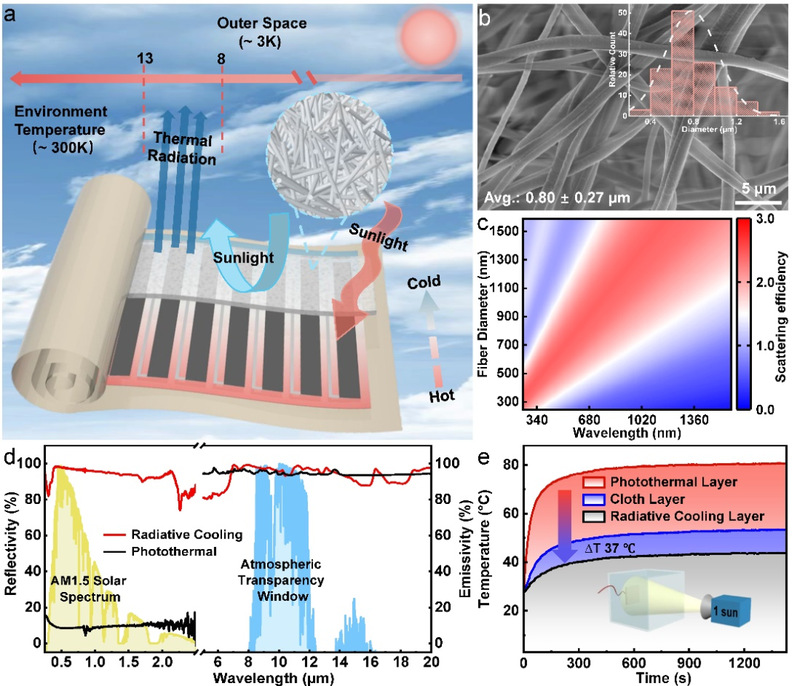Large-area radiation-modulated thermoelectric fabrics for high-performance thermal management and electricity generation
Jinzhuo Liu1,2,3 †, Wangkai Jiang1,2 †, Sheng Zhuo4,3 , Yun Rong1,3 , Yuanyuan Li1,3 , Hang Lu1,3 , Jianchen Hu1,2 , Xiaoqiao Wang1,2 , Weifan Chen4 , LiangSheng Liao3 *, Mingpeng Zhuo1,2,3 *, Keqin Zhang1,2 *
1 National Engineering Laboratory for Modern Silk, College of Textile and Clothing Engineering, Soochow University, Suzhou, Jiangsu 215123, China. 2 Jiangsu Provincial International Cooperation Joint Laboratory for Sustainable Textile Materials and Engineering in Universities, Suzhou 215021, China. 3 Institute of Functional Nano and Soft Materials (FUNSOM), Jiangsu Key Laboratory for Carbon-Based Functional Materials and Devices, Soochow University, Suzhou 215123, China. 4 School of Physics and Materials Science, Nanchang University, Nanchang 330031, China.
Flexible thermoelectric systems capable of converting human body heat or solar heat into sustainable electricity are crucial for the development of self-powered wearable electronics. However, challenges persist in maintaining a stable temperature gradient and enabling scalable fabrication for their commercialization. Herein, we present a facile approach involving the screen printing of large-scale carbon nanotube (CNT)–based thermoelectric arrays on conventional textile. These arrays were integrated with the radiation-modulated thermoelectric fabrics of electrospun poly(vinylidene fluoride-co-hexafluoropropylene) (PVDF-HFP) membranes for the low-cost and high performance wearable self-power application. Combined with the excellent photothermal properties of CNTs, the resulting thermoelectric fabric (0.2 square meters) achieves a substantial ΔT of 37 kelvin under a solar intensity of ~800 watt per square meter, yielding a peak power density of 0.20 milliwatt per square meter. This study offers a pragmatic pathway to simultaneously address thermal management and electricity generation in self-powered wearable applications by efficiently harvesting solar energy.

https://www.science.org/doi/full/10.1126/sciadv.adr2158
